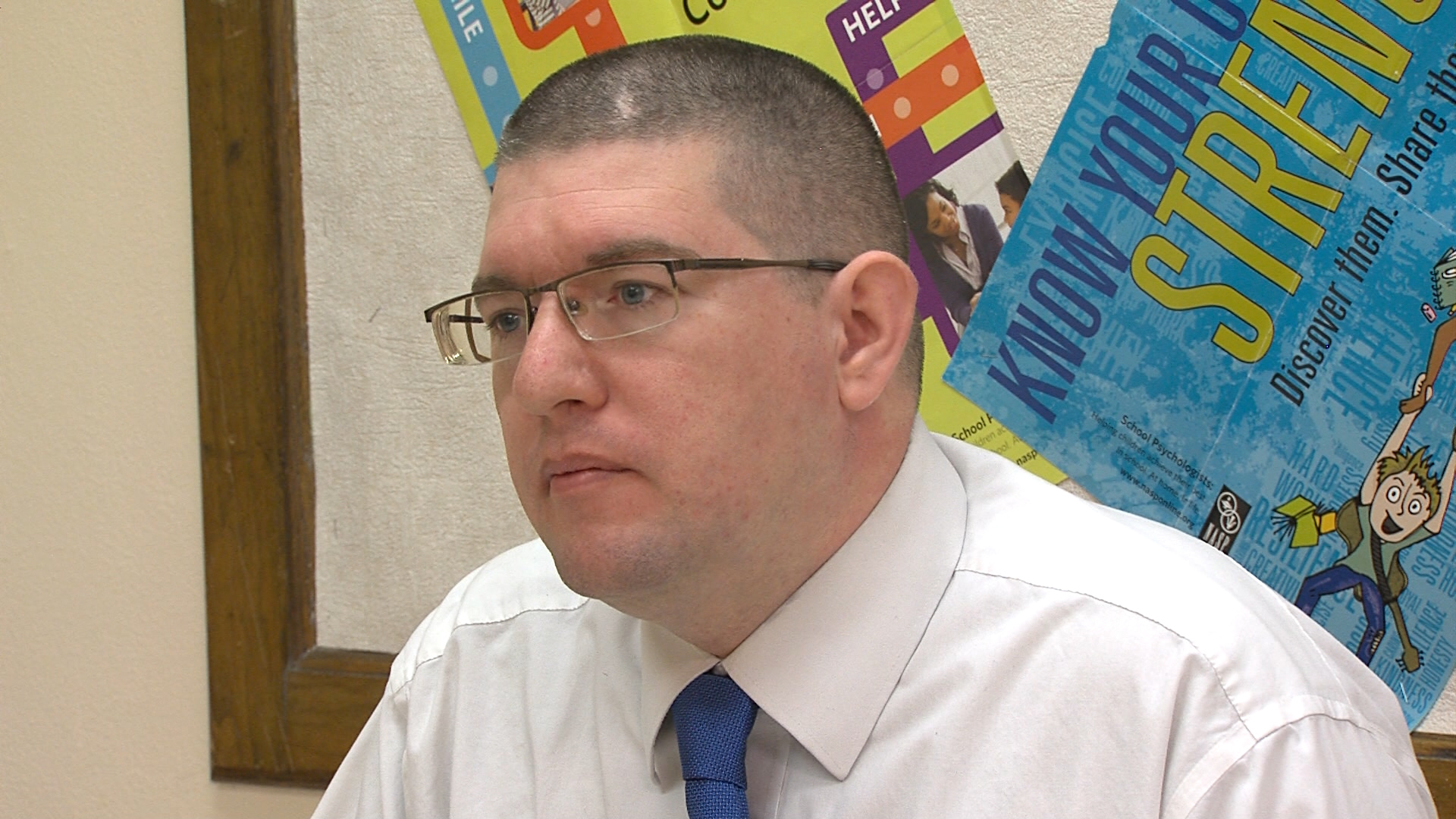By CRISTINA JANNEY
Hays Post
A simple pat on the shoulder would not bother most people, but for a child who has experienced abuse, it might trigger a feeling of intense fear. They might yell or hit or run away.
The Hays USD 489 school district has formed a committee to make schools better adapted for children who have experienced trauma. Instead of punishing children for acting out, they are trying to respond to children in positive ways and give them coping skills to deal with fear and stress.
Childhood trauma can come in many forms. Some of these include sexual abuse, physical abuse, emotional abuse, neglect—physical and emotional, household dysfunction, domestic violence, a parent or guardian with severe mental illness, domestic violence (especially against a mother), divorce, an incarcerated relative, substance abuse and death of a close family member.
School psychologist Kyle Carlin described what a child who has been traumatized may experience.
“In a child who has experienced trauma, a neutral stimulus now is something that creates this fear response in them that they now act out. With a fear response, you might see that fight, flight or freeze, or they might act out, they might try to run away, they might become more aggressive either verbally or physically or they might completely withdraw within themselves and have trouble interacting within the classroom and with everything else that is happening around them.
“Those triggers can be things that we normally would not think would make someone upset, but it is because it brings back that traumatic experience. They go into this re-experience of it and are trying to cope with this scary situation for them.”
Raj Sharma, director of special education, said children who experience abuse at home might re-enact that behavior at school.
“If they are seeing that abuse over and over in the family, seeing their dad or mom involved in the violence. … Our children model what we do at home. They are going to be modeling that in the school. They might see that as a norm. That might not be a norm in our community or society,” Sharma said.
Trauma-informed education is not only a new effort at USD 489, but it is a movement occurring in school districts across the country and is being studied at major universities, Sharma said.
He said an estimated 5 percent to 10 percent of a school’s student population likely has suffered at least one traumatic event. Statistically, that would be one to two children in each Hays classroom.
Some children might have experienced more than one of these experiences, which not only hinders their ability to perform well at school, but also can affect them into adulthood.
A long-term study of 17,000 people who experienced trauma as children demonstrated the connection between childhood trauma exposure and high-risk behaviors (e.g., smoking, unprotected sex), chronic illness such as heart disease and cancer, and early death, according to the National Childhood Traumatic Stress Network.
“If they have any type of trauma — physical or sexual abuse or neglect — that affects their whole life,” Sharma said.
Instead of punishing children who have experienced trauma for their behaviors, new policies seek to help children deal with the intense emotions they feel.
“They don’t require punishment. They require teaching on how to cope with the stress,” Sharma said. “We know now that brain functioning is impacted and this person needs help with how to cope with the stress level. If we punish them, they are going to have more stress.”
Carlin described several techniques he and others teach kids who are dealing with trauma. The child can draw a square on his or her palm. He or she inhales with the first line of the square and exhales with the second line and repeats for the third and fourth lines. Carlin also might ask a child to focus on a sound in the room, such as the whir of a fan.
He said it helps ground the children so they are not so overwhelmed by their thoughts and their body’s physical response to stress.
Some programs are exploring meditation for children who have experienced trauma — in-school meditation instead of in-school suspension, Sharma said. He said meditation programs have been inked to increased math scores, it is believed because it helps students be calmer, more relaxed and more focused.
Establishing routines and clear expectations help children who have experienced trauma. Carlin said the district began to implement new positive behavior programs last semester for all children known as Foundations on the school level and CHAMPS on the classroom level.
Carlin gave an example of how the system works. Instead of reprimanding a student for running in the hallway and saying, “Don’t run,” the teacher would ask the student to walk. They might also ask the student to return to the other end of the hallway and practice walking.
Sharma said building positive relationship with students is key.
“If you have that relation and you provide that positive environment in the school, that is the only way they can overcome from the situation,” Sharma said.
The district has conducted two trauma-informed schools trainings for teachers and staff. It will continue to not only work with individual students, but also a committee is working on district-wide policies.
The district is using a Trauma Sensitive School Checklist that was developed by the Lesley University Center for Special Education, Massachusetts Advocates for Children and the Legal Services Center for the Harvard School of Law. There are 26 criteria on the checklist, dealing with school-wide policies and practices and classroom strategies as well as how the school interacts with mental health services, families and the community.
